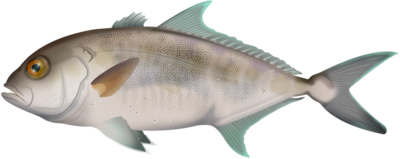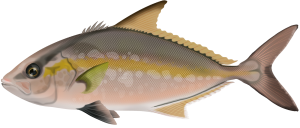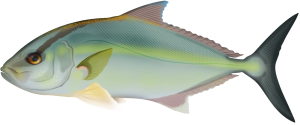Quick Facts
Distribution
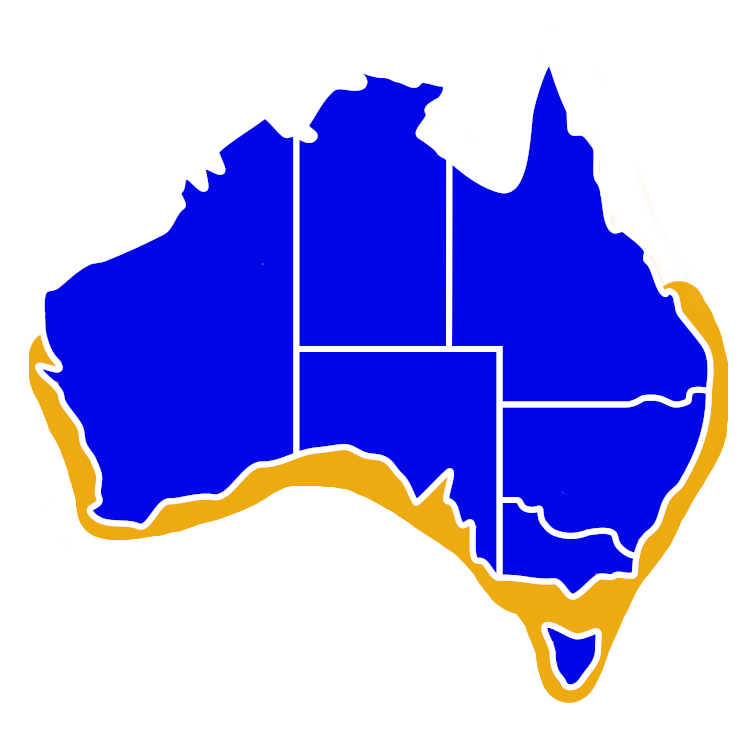
Interesting Info
- The Yellowtail Kingfish is a pelagic schooling fish, they are found in temperate and subtropical waters around the world. In Australia they are common along the eastern and southern coastlines all the way to Western Australia.
- They have a distinctive appearance that makes them easily recognisable. Kingfish have a long, sleek body that is generally silver in colour, with a dark back and a yellowish-brown tail fin.
- Kingfish are highly targeted sports fish and often confused with Samson Fish or other Amberjack species.
- These fish are carnivores and feed on squid, prawns and a range of baitfish including Mackerel, Garfish, Scad (Yakkas), Pilchards and other small fish.
- Estimates of lifespan are up to 20 years with maturity between 5 and 10 years.
- Juvenile or smaller Yellowtail Kingfish are commonly called rats by anglers.
- The spawning season for Yellowtail Kingfish usually occurs between late winter and early summer, with peak spawning occurring in spring. Mature adults migrate to offshore spawning grounds, where they form large aggregations and release their eggs and sperm into the water column. Fertilised eggs then drift with ocean currents and hatch into larval fish.
- Kingfish are known for their powerful swimming ability and are capable of reaching speeds of up to 60 kilometres per hour.
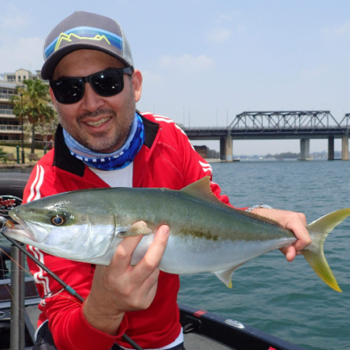
Species Interaction
Recreational & Commercial Fishing
Kingfish are a highly targeted sports fish throughout Australia and the world, known for their strong fight and great taste. They do have a strong commercial value with numerous companies establishing both ocean and land based fish farms.
Scientific Classification
Kingdom: Animalia
Phylum: Chordata
Class: Actinopterygii
Order: Carangiformes
Family: Carangidae
Genus: Seriola
Species: Seriola lalandi
Conservation Status
Based on the International Union for Conservation of Nature (IUCN), the Yellowtail Kingfish is currently categorised as “Least Concern”(LC).
LC is the lowest risk category on the conservation scale for risk with “Extinct”(EX) being the highest.
Fish Taste Quality
Yellowtail Kingfish are considered a excellent tasting fish. They are highly priced as sashimi around the world and good on the grill, baked or smoked.
Taste Rating: 4/5
How to catch
Yellowtail Kingfish
Catch Difficulty: Intermediate
Tackle: Floater Rig, Artificial Rig, Large circle hook rigged on leader with/without sinker with a crimp sleeve
Bait: Anchovy, Fresh cut flesh baits, Herring, Lures, Bait jig, Pilchards, Squid, Slimy Mackerel, Bonito, Yellowtail Scad
Technique: Slowly sink bait towards bottom, Cast bait/jig/lure near schooling fish, Trolling, Cast lures close to structure
Popularity: Highly Targeted
Recreational Viewing
- Snorkeling & Scuba
Finding: Easy
Temperament: Curious
Location: Inner Reef, Outer Reef
Danger: None



